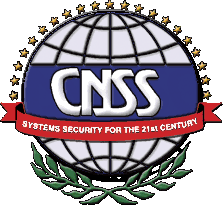Overview
To write programs for ethos you will need to do the following:- Get access to the ethos box folder
- Do a binarary install into VirtualBox
- If you are developing code which will be part of the ethos system, you need to clone our source code.
- The environment in VirtualBox runs Linux on top of Xen (the Linux VM), and enables Ethos (the Ethos VM) to be started up from Linux.
- Then run Ethos
- If you want to have terminal access to Linux, you can do that
- Otherwise, you can use autostart scripts which run when Ethos is booted
Get access to the Ethos binary distribution and documentation on Box
- Get to access the ethos folder on box, either by requesting it from Prof. Solworth. or without request If you are in a class which requires Ethos programming.
- You will get an email with the link in it.
- Read the gestalt.pdf document
- Read the goOnEthos.pdf document
- Read the addingNewUser.pdf document
- Also available
- ethosSystemManual.pdf.
This will teach you how to prepare Xen and Fedora to host Ethos and how to build and install Ethos. - The ethosSystemsCall.pdf
The kernel interface to userspace programs - The crispReport.docx contains information on CRISP, ethos' alternative to the web
- ethosSystemManual.pdf.
Binary install into VirtualBox
We have prepared a binary install of Ethos on box using the VirtualBox Hypervisor which is available free (as in beer) for personal use from Oracle.
- Download the Fedora binary image from box.
- Import the binary image into VirtualBox.
- On the Linux VM
- Login to Linux VM using the following credentials:
username: me password: ethos - You should be able to login from your host machine using ssh by:
ssh [email protected]
- Login to Linux VM using the following credentials:
Run Ethos
- In one terminal, run
cd ~ sudo rm -rf client ethosParams client cd client ethosMinimaltdBuilder sudo ethosRun
Run a terminal on Linux VM into Ethos VM (optional)
- In second terminal, run
cd ~/client && etAl client.ethos
Running additional terminals
- for each terminal, run in an unused linux terminal"
cd ~/client && et client.ethos
Seeing what happened
You can see what happened after Ethos runs (perhaps by doing ethosKillAll and then- Run ethosLog . in ~/client to get and share the running logs.
Clone and build Ethos (ONLY for developers)
Before you can download source, you must have your ssh public key (name ends in .pub) installed on gitolite.# get ethos git clone [email protected]:/ethos cd ethos # completely remove the previous ethos binaries on your VM. sudo -E make uninstall # build ethos make # to install the freshly compiled ethos binaries. sudo -E make installNOTE: It is highly recommended for beginners to read Developers Manual and GoOnEthos Manual. Public information about the project consists of these these web pages and papers published in conferences. We are still publishing our results. Since we spent all this time building Ethos, we would like to be the first to measure it and write about it.

